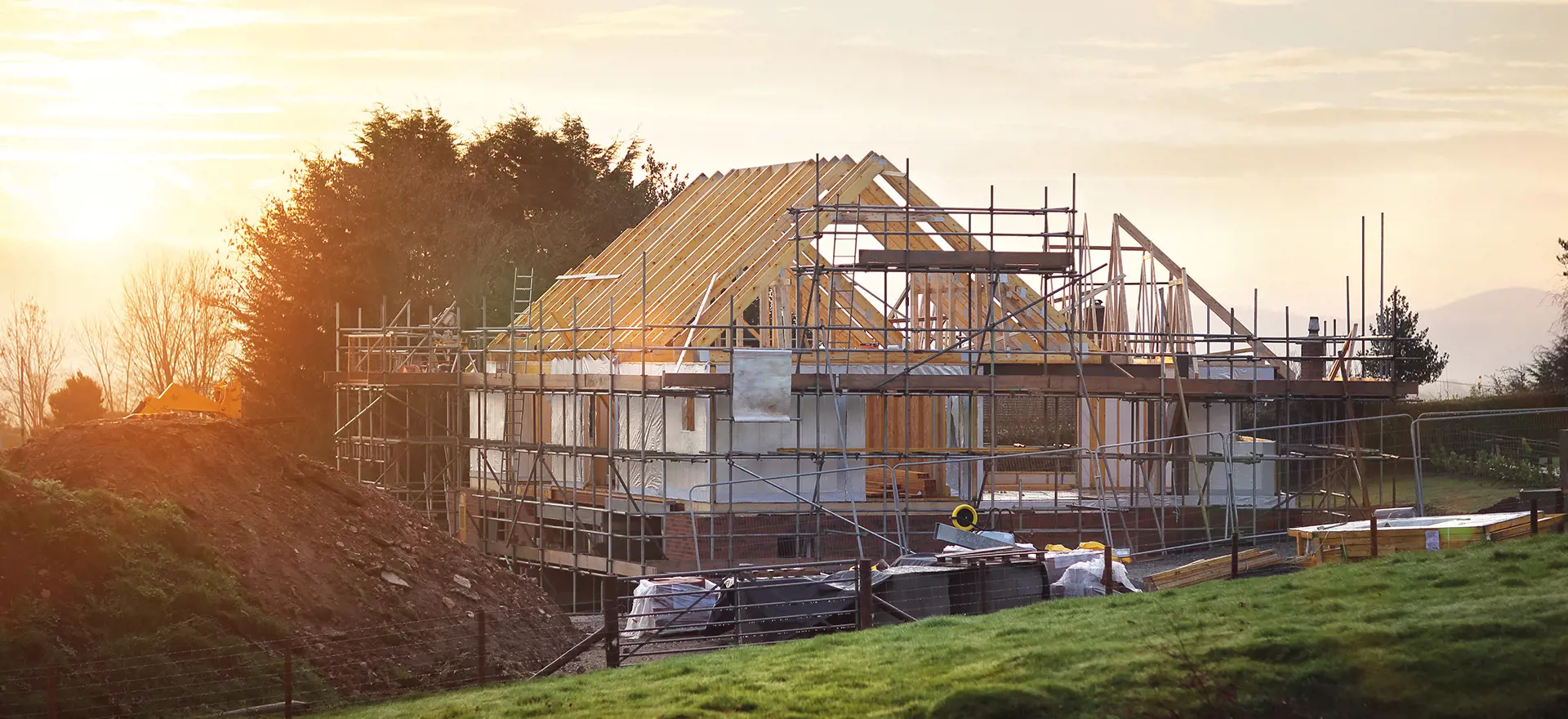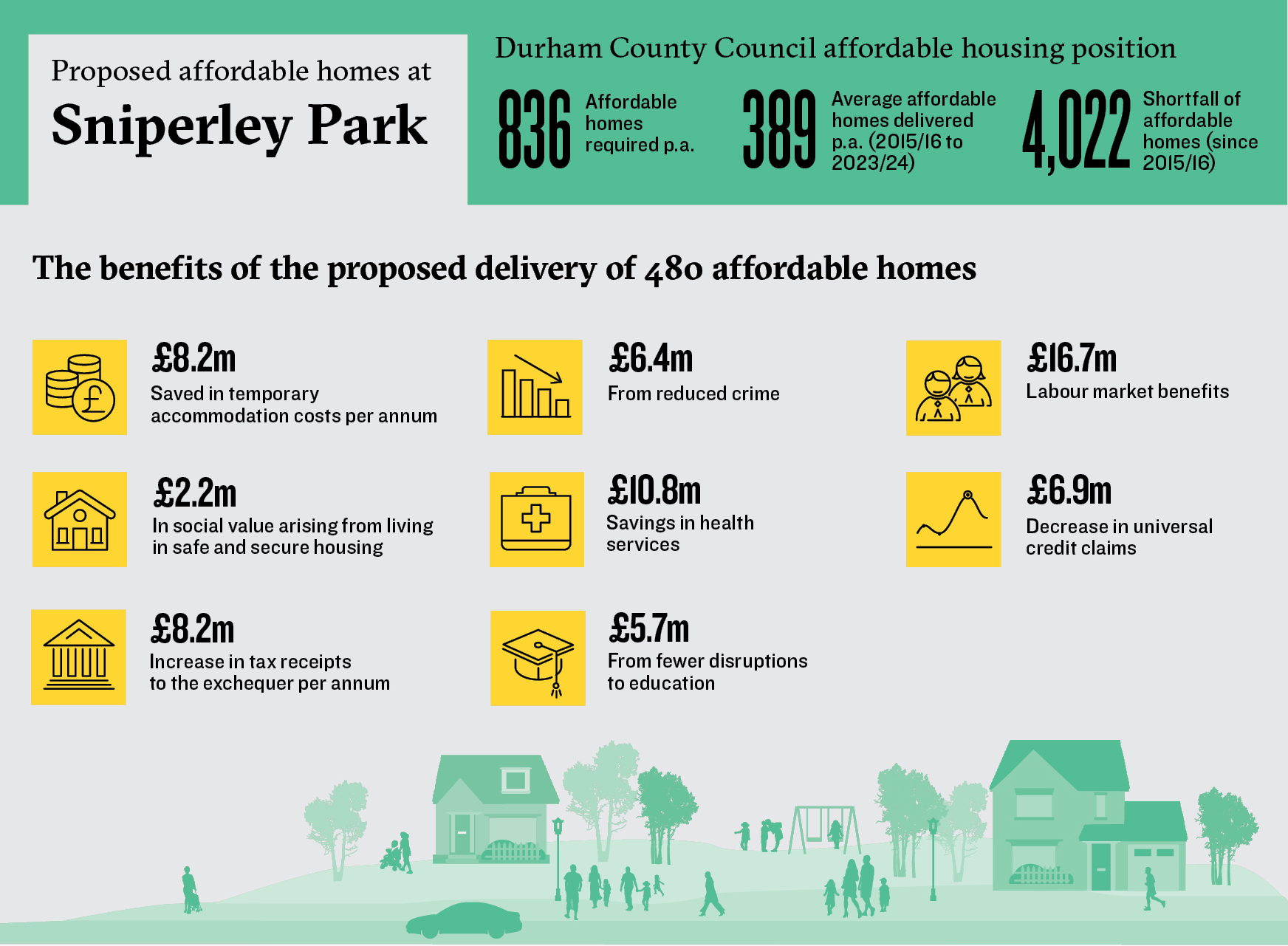Following on from our blog ‘Celebrating 10 years of Lichfields in Scotland’, which focused on what we’ve learned and what’s next, this blog will discuss the outlook for housing policy and delivery.
It is fair to say that Scotland’s housing system has faced some critical challenges in recent years. How have changes to the planning system contributed to this, and is 2025 a year where we can look forward with a sense of cautious optimism?
In May 2024, in the run up to the 2024 UK General Election, the Scottish Government declared a national housing emergency. This followed similar local declarations by five Scottish Councils and was subsequently a further eight Councils declared emergencies in the months following. These thirteen Councils account for over 55% of Scotland’s population. While these declarations of housing emergencies were a welcome acknowledgement of a growing problem, the declarations themselves have no legislative power.
In March 2025, the Scottish Government also released housebuilding statistics which made for sobering reading. New build housing starts and completions across all tenures fell by 17% overall year on year with affordable housing starts reducing by 5% and affordable housing completions reducing by a staggering 25%. This level of house building activity is Scotland’s lowest since 2013 (aside from 2020 where construction activity temporarily ceased due to Covid-19 related lockdowns).
Policy issues
The implementation of National Planning Framework 4 (NPF4) has not helped to relieve existing housing pressures and has arguably contributed to the doom and gloom since its adoption in February 2023. While having a laudable focus on addressing the climate and nature crises, NPF4’s housing policies have not significantly supported the delivery of new homes for people who need them either in the private of social sector.
NPF4 removed the presumption in favour of sustainable development (and the tilted balance in its favour in decision making) which formerly allowed for the delivery of housing on unallocated sites where other plan policies could be met and, at the same time, moved away from a system that required the maintenance of a five-year housing land supply. These were previously a key avenue to ensure housing delivery was maintained even where local development plans (LDPs) were out of date or where a local authority had not allocated enough effective housing land within its LDP.
Instead, NPF4 marked a move towards a system which placed allocation above all else. This has made the delivery of housing on unallocated sites acceptable only in a very narrow range of exceptional circumstances therefore making housing delivery on unallocated strategic land an almost impossible task given the age of adopted LDPs and the fact they do not align with the new policy approach.
The key issue with this, is that there are no transitionary arrangements in place relating to old style LDPs and with ‘new style’ LDPs having a deadline for adoption of September 2028 in many areas there will be a policy vacuum until then. This could mean that some areas of the country will not see any housing delivery on currently unallocated sites until potentially 2030.
Given such an extended timeframe, it would be logical to assume that transitionary arrangements would be put in place in the interim to allow for housing delivery on unallocated sites. This position was put forward by Miller Homes in in the ‘Mossend Case’ (Miller Homes Ltd v Scottish Ministers) where Miller Homes unsuccessfully argued that previous housing release policies in extant LDPs should apply until the adoption of ‘new style’ LDPs. This position was dismissed by the court and effectively solidified the position that housing delivery on unallocated sites would be practically impossible for some time. (
See our more detailed blog on Mossend from last year).
Further complications also arose from NPF4’s introduction of the Minimum All-Tenure Housing Land Requirement (MATHLR). This set out a 10-year land requirement for the delivery of housing across all housing tenures in each local planning area. While this is intended to be used to inform ‘new style’ LDPs and their Local Housing Land Requirements (LHLRs), which in turn are designed to take an ambitious approach and exceed the MATHLR, this has become the de facto housing target for each local authority until the adoption of ‘new style’ LDPs.
While on the face of it, this should not pose an issue, Lichfields’
previous research on this shows that the MATHLR sets minimum housing delivery targets approximately 25% below the housing supply targets that were previously set within LDPs across Scotland and, more worryingly, this number also falls below the rate of housing delivery in the years leading up to the adoption of NPF4.
So, where is the optimism?
So, given that context, you might be inclined to ask: where is the cause for optimism?
Thankfully, the housing emergency has moved towards the top of the political agenda and there is now a strong political consensus in favour of finding ways to address it. All major political parties within Holyrood appear to agree that something must be done to encourage housebuilding although there isn’t agreement on exactly what those measures are yet. This consensus has come about at a key time as Scotland approaches the 2026 Scottish Parliamentary Elections.
The planning reforms made by the Labour Government in Westminster have largely set the tone and provide some context for the policy debate within Scotland on stimulating housing delivery. As part their reforms, Labour in Westminster have made changes to England’s National Planning Policy Framework (NPPF) which focused on delivering housing and removing policy barriers to housing delivery. (
See our more detailed analysis on the NPPF changes)
While it remains to be seen if those reforms will have their intended impact, Labour has begun its tenure boldly by making the housing crisis in England a priority. The immediate change in tone and direction of travel for planning and development under a Labour Westminster Government was welcomed by the housebuilding industry and may influence proposals in Scotland in the run up to the 2026 Holyrood elections.
Likewise, the growing emphasis on housing was demonstrated in the Scottish Government’s Programme for Government 2024/25 published in September 2024, which placed housing as a key political priority over the coming parliamentary period. The programme included a vow to continue existing support to local authorities in developing their development pipelines, as well as pledging to increase the right mix of housing supply in the right place. While these were largely reassertions of existing policy and focusses, a new Planning Hub was also announced which is intended to support housing development and will likely focus on the delivery of homes on larger, legacy, and stalled sites. Certainly, the formation of a specialist national hub focused on housing delivery is welcomed in principle but how it will operate in practical terms remains uncertain. Significant resourcing and funding will be required to assist Councils in addressing their backlog of major housing applications which currently take over 35 weeks on average to determine (far beyond the target of 4 months).
The publication of the Planning and the Housing Emergency – Delivery Plan in November 2024 provides further cause for optimism by setting out in more detail how the Scottish Government will approach housing and its relationship with the planning system. The delivery plan notes four key areas for action to address the housing emergency for planning:
- Policy – While the plan disappointingly offers no suggestion of a substantive policy change, an emphasis in ensuring consistency in policy application is positive as is the vow to identify further mechanisms to stimulate housing delivery and the build out of sites.
- Delivery – The key aspects of this are in the implementation of Masterplan Consent Areas (see our blog on the draft regulations from last year), the aforementioned new Planning Hub to support housing delivery, supporting the formation of housing pipelines, support for SME builders and reforms to the compulsory purchase system. While on the surface these are positive and welcome, the detail of these will be vital to their success or failure.
- Efficiency – Much of the focus of efficiency appears to reassert existing long-term priorities which have long been issues within the planning system – namely inconsistent approaches to: validation standards; the use of planning conditions; and Section 75 agreements. While these are welcome, it is unclear how these will be achieved now given how long these have been issues in Scotland. One key positive identified in this area however is the stopping of work in relation to the infrastructure levy which has been sought by the housing industry since it was first proposed.
- Capacity – The key emphasis on capacity largely relates to developing skills and increasing capacity through recruitment and encouraging new pathways into the planning profession. Planning fee increases are also indicated with the intention that these are reinvested into service delivery; however, there are no mechanisms to ensure that the additional funds are retained for planning or any suggestion of full cost recovery.
The Scottish Government is also looking at alternative mechanisms to stimulate housing growth including a recent consultation on permitted development rights. While this may or may not be an ideal solution and is unlikely, in isolation, to deliver the number of homes required to address the housing emergency, it is positive to see a range of options being considered and reviewed as a means to stimulate housing delivery.
Funding for the Affordable Housing Supply Programme (AHSP) has also been increased to £768m in the Scottish Government’s 2025/26 Budget. The AHSP provides funding for social rent housing by registered social landlords (RSLs) and local authorities, housing for affordable home ownership and mid-market rented housing (i.e. housing above social rent levels but below market rent levels). This is a positive step to ensure that the programme is appropriately funded throughout the next parliamentary session prior to the Scottish Parliamentary Elections of 2026 and to support the delivery of much needed affordable housing. Importantly, this budget increase not only provides a real terms increase in the AHSP budget when compared to the 2024/25 budget but also reverses significant AHSP budget cuts within the previous budget. While it is disappointing that these figures remain below the AHSP budget levels of 2021/22 and 2022/23 in real terms, it is encouraging that the Scottish Government appear to accept the error in their 2024/25 cuts to this programme’s budget and the importance of the programme in aiding the delivery of affordable housing.
Next Steps
As the 2026 Scottish Parliamentary Elections grow closer, we will hear more detailed proposals for how to ensure housing is delivered in numbers that will address Scotland’s housing emergency. It will be for politicians of all political parties to develop bold and practical ideas to encourage the building of the homes Scotland needs.
The growing political emphasis on the need for housing delivery in Scotland to help to alleviate the housing emergency makes this seem to be an achievable reality as the public increasingly sees housing as a key priority. The hope is that this pressure amongst the electorate and the contrasting mood surrounding housing delivery in England will renew focus on pursuing worthwhile reforms to encourage more homes to be delivered throughout Scotland and address the crisis head on.
However, to deliver the number of homes needed will require bold changes in policy. While the planning policy shift in Westminster will set some context for proposals within Scotland, the political and policy circumstances differ in Scotland so it is unlikely that there will be an exact replication of those reforms in Scotland regardless of which party is successful in the 2026 elections. It will however be exciting to see the policy proposals to encourage the delivery of much needed homes in Scotland from all political parties in coming months.








